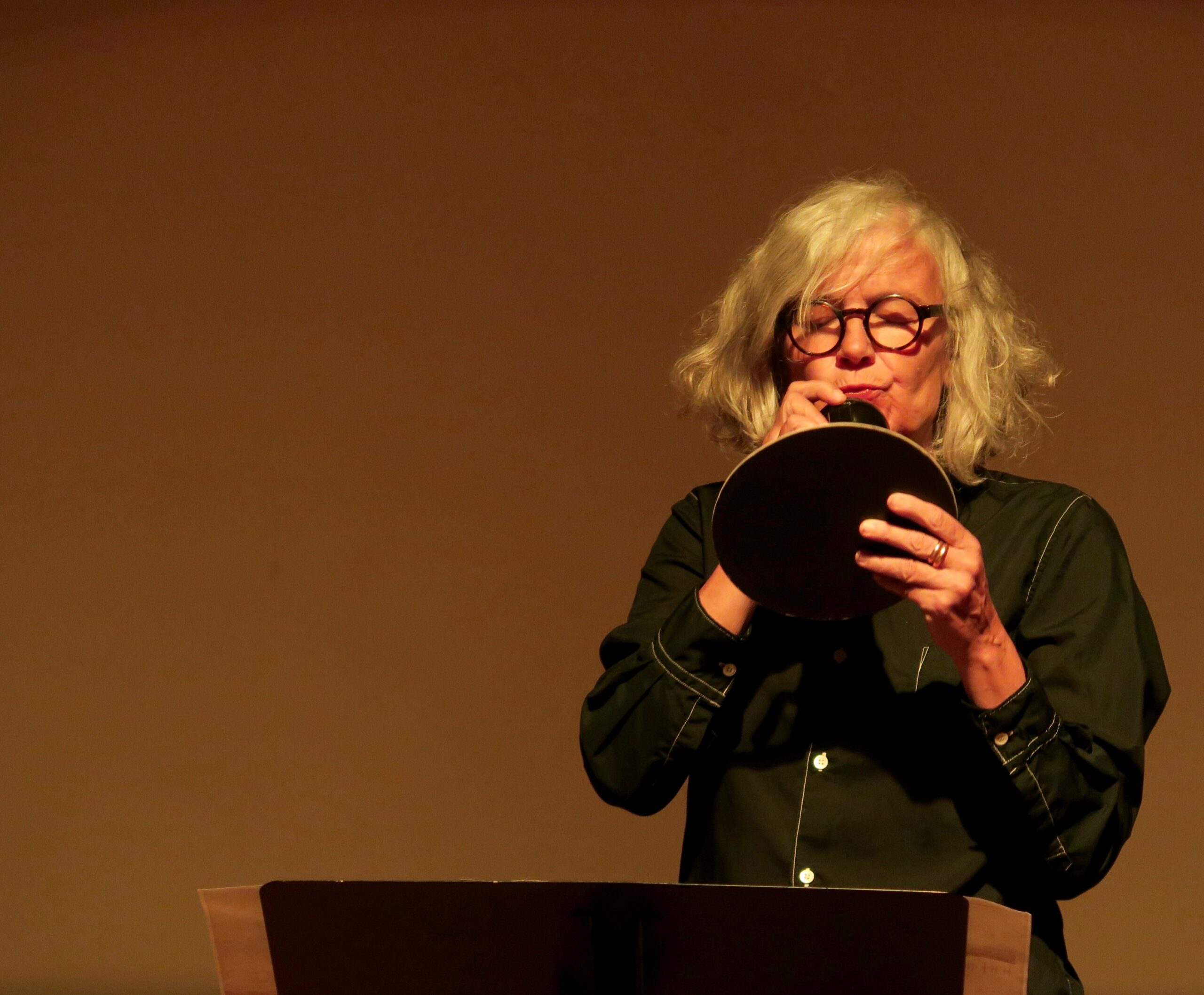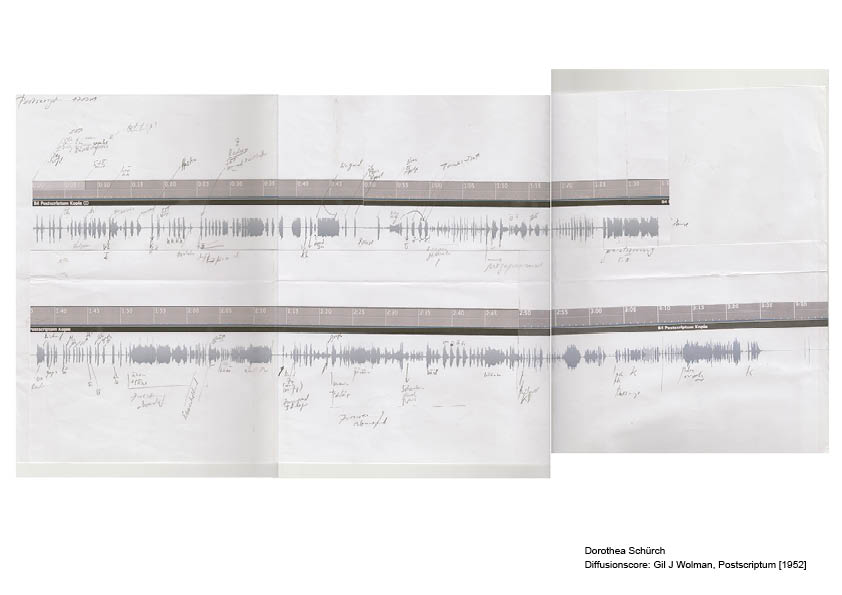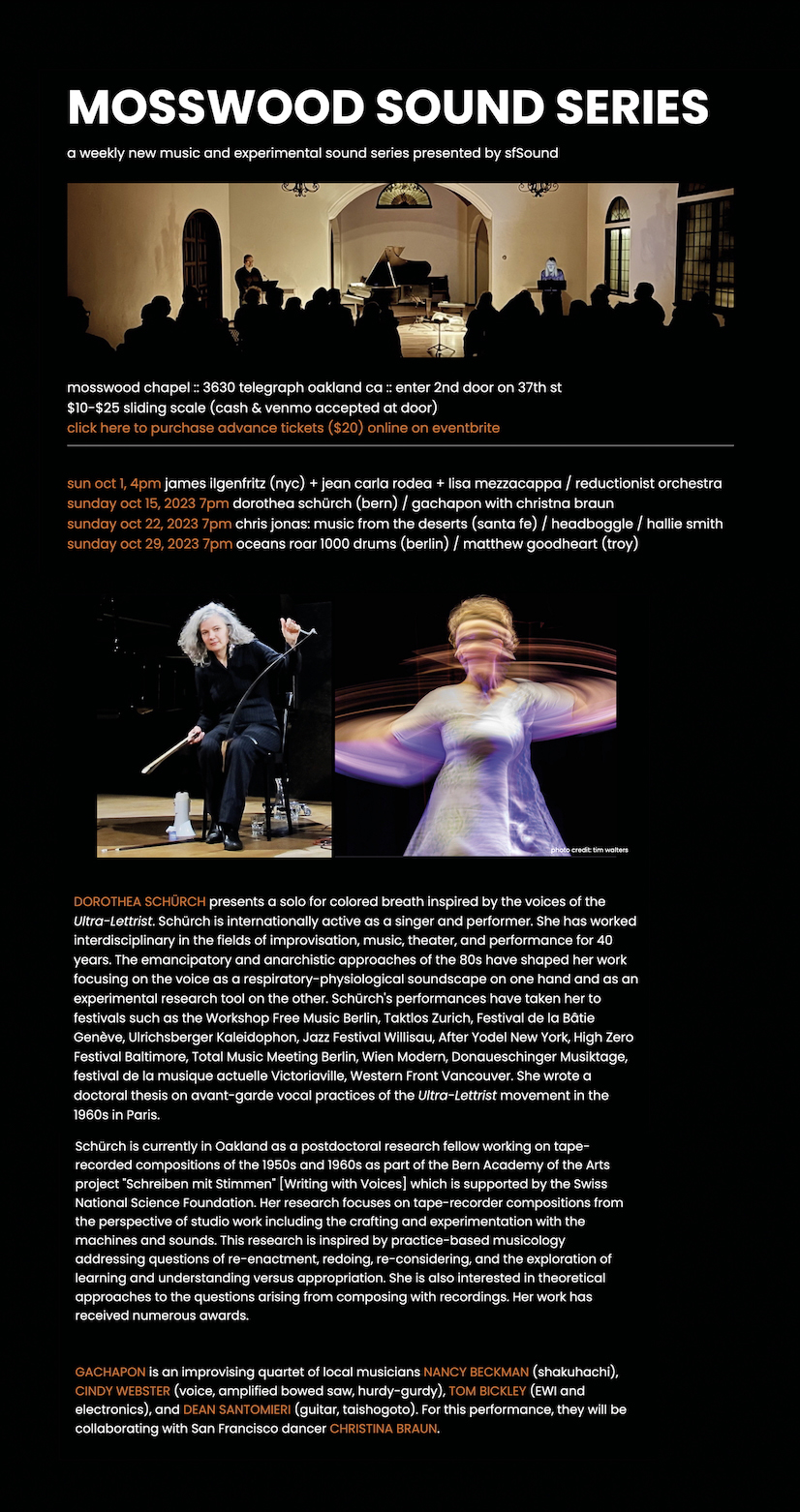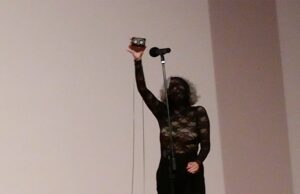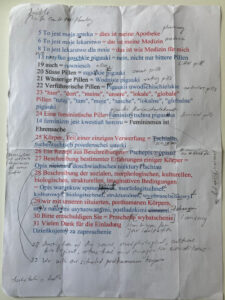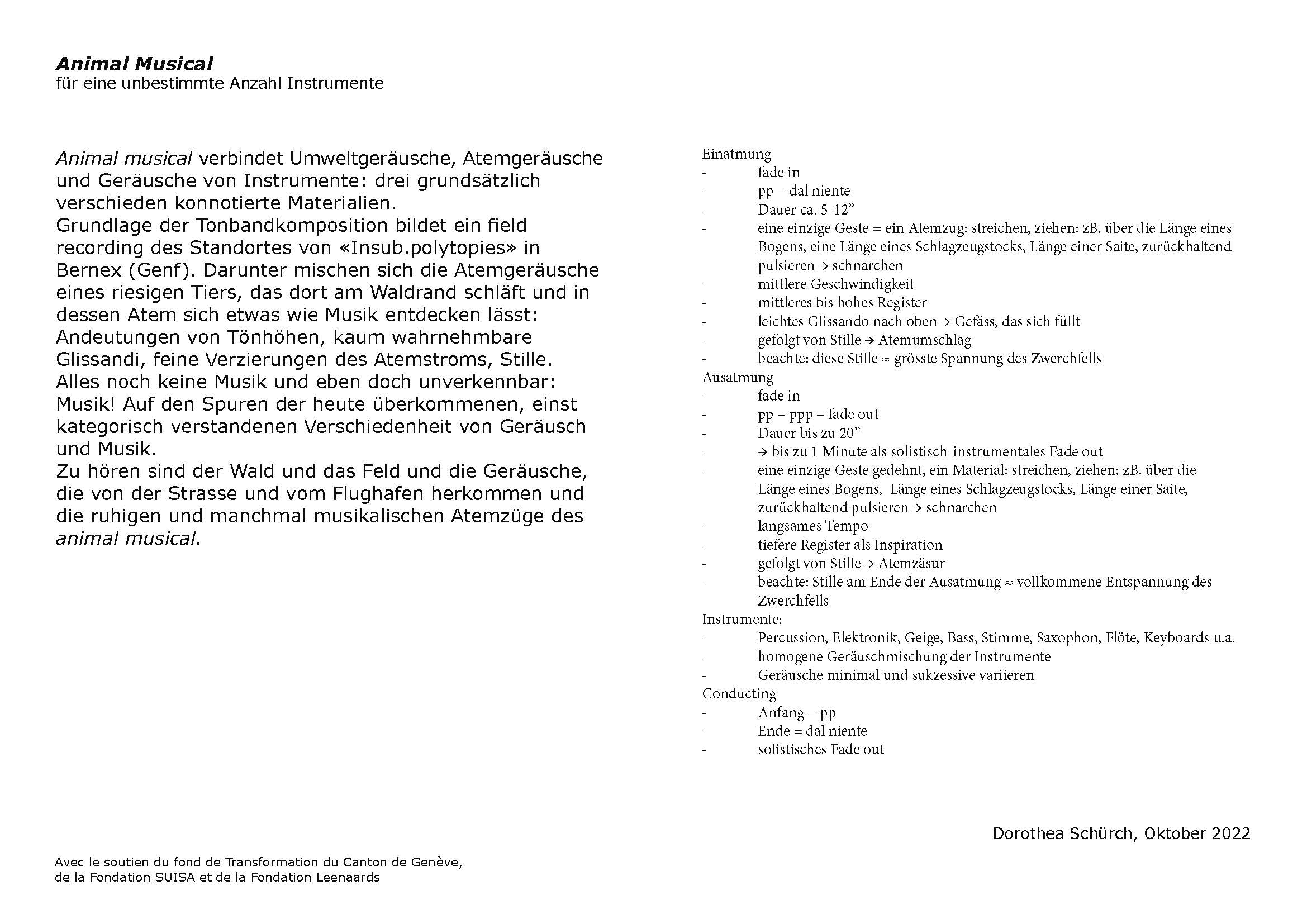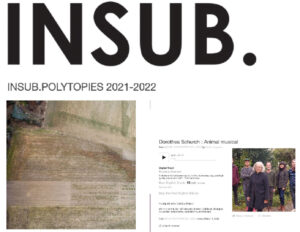129 Log 230912 writing music
Sybille Krämer: Aspekte einer philosophischen Therie der Schrift
Ringvorlesung
writing music – Zu einer Theorie der musikalischen Schrift
→ Interdisziplinäre Ringvorlesung am Institut für Musikwissenschaft und Interpretationsforschung, 20.10.2016 (1)
Universität für Musik und darstellende Kunst
Wien 2016/17
Sybille Krämer
Zu einigen Aspekten einer philosophischen Theorie der Schrift
Einführung
Zum Schriftkonzept im Sinne der aufgeschriebenen mündliche Sprache
und zum Potential des Schriftkonzepts
Töne erklingen und verschwinden, wie der sprachliche Laut
Existenz, die im Verschwinden besteht
Aufzeichnung wird entscheidende Technik
ist Schrift sekundär?
sekundär = Defizit
- Debatte Oralität – Literalität
- Sprache ist ein System (Elemente und Regeln)
- die Idee der Systematizität ist eine Projektion der Schrift
- Schrift ist das verschwiegene Modell für Sprache
- Skriptizismus
- Ferdinand de Sausurre (1757–1913, Sprachwissenschaftler): die Bedeutung entsteht aus dem differenziellen Prinzip, vgl auch Gunnar Hindrichs (*1971, Philosoph, Basel): Philosophie der Musik
Grundbaustein der Musik ist der Klang. Klang ist nicht allein bestimmt als etwas Hörbares, sondern auch durch das Verhältnis eines Klanges im System der Klänge, die erklingen, also auch bestimmt durch das, was nicht erklingt
= Systemgedanke, die Basis ist nicht die erklingende Musik, sondern die aufgeschriebene Musik
Frage: welche Bedeutung hat die Tatsache, dass die Musik aufgeschrieben / aufgezeichnet wird? Ist die Schrift etwas Bestimmendes und imprägniert sie die Musik? Braucht die Musikwissenschaft eine Oralitätsdebatte?
Was macht Schrift?
- Zeit: Sukzession, Gegenwartspunkt an Gegenwartspunkt
- Zeit wird durch Schrift verräumlicht: das Nacheinander der Zeit wird ein Nebeneinander der Buchstaben, räumliche Linearität
- Schrift = Anordnungsverfahren, niemals nur Linearität, sondern auch Fläche benutzt = zweidimensional
- Diskretes Zeichen zerschneidet das Kontinuum, Leerstellen, Lücken, Zweidimensionalität
- Zwei Zeichen können niemals ineinander übergehen
- Leerstellen ist ein räumliches Phänomen
Worin liegt die Attraktivität der Schrift, der artifiziellen Flächigkeit?
- Sonderraum eines zweidimensionalen Raumes, indem alles kontrollierbar wird
- = Überblick, Vogelflugperspektive
- In der Partitur nimmt die Musik einen operativen, überblickbaren Raum, es ist zu sehen, was gewesen ist und was kommen wird…
- Überklang des Klangraums der leiblichen Dreidimensionalität in den Schauraum der artifiziellen Zweidimensionalität, diese Transformation bringt ein neues Potential
- Schrift ist kreativ, weil man sie auf dem Papier herumschieben kann, umstellen, kopieren, zusammenfassen – abgesehen davon sind Zahlen erst durch die Schrift/Zeichen sichtbar
- = das Potential der Schrift
Das was Schrift ist und leisten kann in 4 Geschichtspunkte geordnet
– Räumlichkeit
– das Graphische (Graphismus)
– das operative Potential
– Affinität von Schrift und Maschine (Komputer)
Schrift ist vergl. wichtig wie die Erfindung des Rads
wie das Rad für Mobilität der Körperlichkeit steht, so die Schrift/artifizielle Flächigkeit für Mobilität und Kreativität
Räumlichkeit der Schrift
These: die Zweidimensionalität als Denkwerkzeug (Kulturtechnik der Verflachung) ist entscheidend. Aber Oberflächlichkeit wird diskreditiert(?) (Tiefgang ist wichtig). Dabei haben wir den inskribierten Flächen so viel zu verdanken (heute Smartphone!)
- Wissenschaft und Kunst entstehen aus dem artifiziellen Umgang mit Schattenrissen
– Töpfertochter Butades bannt die Gestalt ihres Liebhabers durch den Schattenriss an die Wand.
– Zeitmessung der Sonnenuhr durch Schattenwurf
– das Höhlengleichnis, für Platon ist der Schatten defizitär
= Schatten verwandeln das Volumen in eine Fläche
Gibt es etwas wie Schatten in der Welt des Auditiven?
Graphismus der Schrift
- Sprache mache den Menschen aus. Kein Wesen im Tierreich hat der Sprache vergleichbares grammatikalisches, semantisch, syntaktisches Verständigungssystem wie der Mensch
Es gibt die Signalsprachen des Vokalischen. - Es gibt nichts dem Bildermachen/Krizeln/Markieren/Oberflächen analoges
- Einritzen, auftragen als Disposition ist genauso wichtig wie unsere Sprachlichkeit
- wir sind zweisprachige Wesen
- Punkt, Linie, Fläche wirken zusammen als Graphismus
- Linie hat eine Doppelnatur: 1. Geste der Hand wird abgebildet, sie gibt die Geste in der Zeit als Konfiguration im Raum wieder, sie übersetzt 2. steht die Linie für den freien Entwurf, das den Wahrnehmungskonventionen widerstreitet, solche Objekte kann man nicht herstellen, das gibt’s nur zweidimensional.
Linie = Potential der Abbildung + Potential der freien Kreation / Projizieren von etwas das besteht + den Entwurf, der noch in keiner Weise ein Vorbild hat in der Welt (und ev. nie haben wird)
- Zu Descartes erster (musik)theoretischen Schrift (compendium musicae, dt Übersetzung erst 1978) eine Art Musikdiagrammatik (Quintenzirkel, unzählige musikalische Diagramme) die ästhetischen Eigenschaften des akustischen Erklingens von Musik werden mit visuellen Eigenschaften erklärt (Intervall Ästhetik: die Proportionalität der konsonanten und dissonanten Tonverhältnissen werden in Linienkonfigurationen überführt, konsonant ^= ganzzahlige Verhältnisse
- Graphismus ist der gemeinsame Ursprung von Zeichnung und Schrift, zb Kritzeln, ist genauso grundlegend wie Sprechen, ev. wie Musizieren?
- Beachte: Sprache kann man negieren, das Nein, es gibt kein Äquivalent im Graphismus
Operatives Potential der Schrift
Wenn die Schriftanordung räumlich ist, dann ist eine Zeitachsen Umkehr möglich. Der Mediendenker Kittler hat seinen Medienbegriff an diese Gegenheit gebunden. Für Kittler ist der Körper kein Medium. Der Körper ist der Irreversibilität der Zeit mehr oder weniger unentrinnbar unterworfen.
Auf den artifiziellen Flächen haben wir einen Sonderraum entworfen mit der Option die Irreversibilität der Zeit zu bannen.
Über den Spielbegriff nachdenken: Musik ist ein Spiel, Sprache ist ein Sprachspiel. Über Musik nicht in den Kategorien der Sprache nachdenken, das geht für SK nicht, aber Spiel, ja! Spiel heisst etwas lässt sich hin und her bewegen: Lichtspiel auf dem Wasser, die Schraube hat Spiel. Ohne Ziel. Spielräume. Kein zweckorientiertes Produkt. Die artifizielle Fläche lädt ein zum Spiel, Umkehrbarkeit praktizieren und erfahren.
Das Mechanische der Schrift / Affinität von Schrift und Maschine
Alles was diskretisierbar ist, kann auf eine Maschine übertragen werden.
Als erste Programmiererin gilt Ada Lovelace (1815–1852, Mathematikerin, London) (Berechnung der Bernoulli Zahlen). Sie arbeitete mit Charles Babbage an einer universalen Rechenmaschine. Tiefe Verwandtschaft der Schrift mit dem Tabellarischen und dem Diagrammatischen. Schrift ist mehr als eine lineare Aufzeichnungstechnik, sie ist mit der Zweidimensionalität im Bunde. Tiefe Affinität zwischen Schriftlichen und dem Mechanischen
Schluss
Derridas Grammatologie als Dia(?)-Grammatologie weiterentwickeln/entfalten um das Potential der Schrift aufzudecken.
Vieldimensionales Schriftkonzept, in dem die Schrifttechniken in ein grösseres Ganzes einer Kulturtechnik der Verflachung einordnen, dazu gehören auch Grafen und Diagramme, Karten, Tabellen, dazu gehören auch musikalische Schriften.
Schrift bezieht sich auf verschiedenen Referenzobjekte (Sprache, Zahlen, musikalische Zeichen)
Grafische Notation der NM
Die Schrift des Musikalischen
Wie klangliche Innovation und Medieninnovation zusammengehen
Den Alphabetismus der musikalischen Schrift kritisieren:
- Earl Brown (Kritik der traditionellen Notation), Vorbild sind die Künste, Brown bezieht sich auf Calder, Jackson Pollock, etc.
- Joseph Schillinger (Klanggeschehen naturwissenschaftl. verzeichnen, Physik, Koordinatenkreuz, bezieht sich auf Descartes)
Descartes und das Koordinatenkreuz macht das Blatt zu einem adressierbaren Raum, Descartes erfindet die analytische Geometrie, Koordinatenkreuz, vorher seine Musikdiagrammatik, geometrische Formen für das Klanggeschehen)
Die Schrift hat die Eigenschaft das Werk hervorzurufen. Urheberschaft an einem Werk, das nicht verschwindet, das tradierbar wird. Der Werkbegriff ist auf engste Weise verwoben mit der Schrift. Mit der Möglichkeit Musik zu schreiben entsteht der Autorenschaft. Zu archaischen Zeiten hatte Musik hatte keinen Autoren. Literatur entsteht mit Autoren, so auch in der Musik. Für Earl Brown werden die Interpreten zu Mitautoren, es gibt nicht zwei identische (gleichklingende) Aufführungen. Brown Subversion des traditionellen musikalischen Notationssystem ist auch eine Subversion der traditionellen musikalischen Autorschaft.
Mit der Karte navigieren in der Stadt. Die Karte wird aufgeführt, wieder umgesetzt in die 3dim? Ist das vergleichbar der Interpretation der Musiknotation in der Aufführung, eine Umsetzung in die 3.dim.
Zeit ist eindimensional, Lebensraum ist 3dim, die Zweidimensionalität ist eine Übersetzung, ist angesiedelt im Dazwischen, das eine in das andere transformieren, sie ist eine Passage, eine die alles verändert. Das Notenblatt verändert alles, auch unser Hören?Die Zeitumkehr kann gedacht werden, aber aufgeführt?
Es geht um Schriftkonfigurationen.
Rechnen konnten früher nur die Mathematiker, mit dem Dezimalsystem wurde rechnen es allen zugänglich zu einer Alltagstechnik. Es geht um Kontrolle und Kreativität, Überschuss und Disziplin
Intransitiver Spielbegriff: etwas spielt: ein Lächeln auf den Lippen, das Spiel der Lichter auf dem Wasser zum intransitiven Musikbegriff: die Saite bewegt sich, Spiel = das Hin und Her einer Bewegung, die Saite schwingt = Quelle des Schalls/Musik
Im Hin und Her der Schwingung schwingt die Vorstellung der reversiblen Bewegung mit: das Vor und Zurück, als könnte die Zeitachse umgedreht werden.

